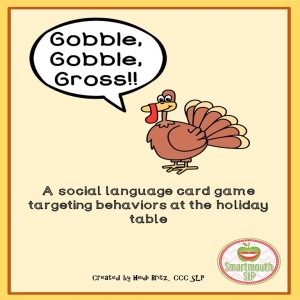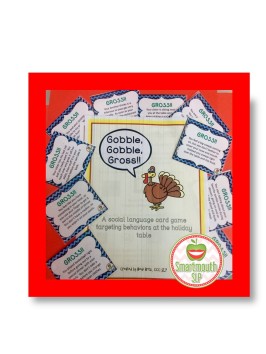
Earlier this year, I posted about using T-shirt slogans for inferences. Tis the season for ugly sweater parties, so why not extend this concept to the holidays too? I found this great freebie on TPT from LittleRed when you follow her store (you will get a pass code to download the clipart) with a variety of clip art holiday sweaters like the one in the picture above!. You can make your own slogan/picture activities for your late elementary through high school students to figure out the meaning or guess who might wear these holiday sweaters. If you don’t want to make your own, the internet is FULL of great examples. Preview first my friends, preview first, I saw a LOT of inappropriate sweaters (don’t use them, but they are sure to give you a laugh). On a related note, I also found a cool website, Stereotype Design, that gives a few sentences on a T shirt and you have to guess the movie ( well, hello figuring out the big picture from details!).
You can create a whole Pinterest board of ugly holiday sweaters/t-shirts to work on these skills as well (or just click for my board here; it’s a growing work in progress, just like me). Walk them through a few examples to practice together, then see how they do!
The questions you can pose with the ugly sweaters could include:
What do you think the message or picture means (intent)?
Is this literal or sarcastic? If it’s humorous, what makes it funny?
Who might wear this? Who would NEVER wear this?
What do you think other people might think or feel when they see this sweater?
Where would it be okay to wear this sweater? Where would it NOT be okay to wear this sweater?
What first impression do you have of someone wearing this sweater?
What background knowledge might you need to understand the slogan or picture?
Would you wear this sweater? Why or why not?
If you disagree or are upset with a sweater picture or slogan, should you say something? Why or why not?
*Ask your students to take pictures of any other interesting holiday sweaters that they see to extend this activity. You can call it “operation sweater sleuth”! I would clearly state the rule that the slogan/pictures can’t have any profanity or inappropriate content, especially with your middle schoolers on up.
Any good, kid friendly holiday sweater slogans or pictures that you have seen recently? Share here!


